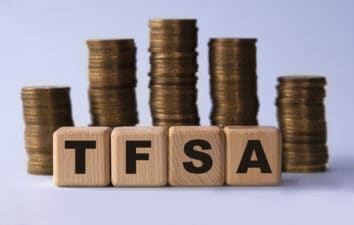In this day and age, accounting regulatory bodies, such as the CSA in Canada and SEC in the U.S., exist to enforce their respective accounting standards: IFRS and U.S. GAAP. Although these regulatory bodies stand to minimize outright financial statement misinterpretations, they don’t possess enough resources to enforce every single company’s compliance to allow for the “best representation” of business operations.
Moreover, a lot of accounting decisions under both U.S. GAAP and IFRS (in Canada and other countries) require a high degree of discretion.
In many instances, it’s up to management to choose an accounting method that they believe will better represent operations in a quarter. When given a high degree of flexibility, management teams may naturally gravitate towards adopting an accounting method that may provide near-term earnings with an artificial “boost.”
In other words, adjusted earnings may be boosted to impress analysts on the Street.
These adjusted numbers may not necessarily be the best representation of what’s really going on at a company in a given period, and that’s a huge reason why Warren Buffett recently warned investors in his last annual letter to Berkshire Hathaway Inc. shareholders with regards to adjusted per-share earnings.
How adjusted EPS can mislead
For example, consider a company whose equipment is subject to impairment due to obsolescence. In such cases, a company is required to write down (reduce) the amount of the asset on its balance sheet.
There are no stringent rules that require a company to continuously test its long-lived assets for impairment without significant evidence first. Thus, a considerable amount of trust is placed on management to do the right thing by recognizing and writing down impaired assets as soon as they can. Such asset write-downs imply an expense on the income statement that lowers net income for a given reporting period, however.
So, if a management team still desires to beat the bottom line for a given quarter, they may be intentionally enticed to hold off the write-down for another reporting period — potentially having the opportunity to offload company shares before performing the required action that’ll have an undesired impact on near-term profitability numbers and ratios that are used by analysts.
That’s alarming when you consider the ratios used by analysts may not be what they seem without proper “counter adjustments” that need to be made before conducting a proper analysis.
The most concerning thing about management-adjusted earnings is the fact that they’re entirely allowable, despite having the potential to mislead a vast majority of the general public.
Adjusted EPS may not paint the whole picture
Retail investors who simply skip the financials and opt straight for adjusted earnings per share (EPS) may stand to make investment decisions that they may not have made if they received re-adjusted EPS number that’s more representative of how a company fared in a given quarter.
By skipping straight to the adjusted EPS numbers, an investor is placing all of their trust in management’s judgement in a number that may not be indicative of how performance was for a given quarter.
Think about the one-time adjustments made by the big banks like Royal Bank of Canada (TSX:RY)(NYSE:RY) earlier this year in response to revaluation expenses that resulted from U.S. tax reforms. Such one-time write-downs may have implied sub-par earnings results, when in reality things were actually up to par!
Management did the right thing by applying write-downs as soon as possible, but an investor may not have gotten the full story of what happened if they went straight for the adjusted EPS number, ignoring all else.
Fellow Fool David Jagielski thinks investors should ignore adjusted earnings, which is probably a wise decision, as it tempts laziness and a lack of due diligence on the part of the investor.
If you do ensure due diligence though, adjusted earnings are fine and dandy, as long as you dig deeper into the financials and the management discussion and analysis, so you can judge for yourself whether or not adjustments made (or not made) are a fair representation and how you can re-adjust numbers like adjusted EPS to get a more accurate representation of performance for a quarter.
Stay hungry. Stay Foolish.








